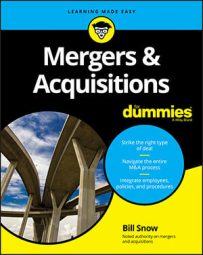If your M&A deal is a carve-out (a divestiture from another company), you likely have quite a bit of work to make sure the carved-out company is able to operate as a stand-alone entity. Some of the areas of focus include the following:
Payroll and banking: Making sure employees continue to receive their paychecks is probably the most important immediate consideration of any Buyer. You need to make sure the carved-out company has a new bank account with enough cash to handle the next payroll.
Employment paperwork: In a carve-out situation, employees may actually be technically fired by the former owner and rehired by the new owner. Be ready on day one to process all the new employees who are being fired and rehired.
Employees may need to bring in identification and will probably have to fill out paperwork as if they were new hires. Speak to your human resources manager about what paperwork will be necessary.
Accounting: Make sure all accounting issues are settled before you close the deal. What accounting package does the carved-out company use? Is it still using the former owner’s accounting package, or does it have its own package that’s part of the transaction? Are the records from the previous owner available to the carved-out company after the deal closes? Is accounts receivable information accurate and available to the new owner?
IT and phone systems: What software systems does the carve-out company need? Who handles the IT system? How about the phone system? If the carve-out is utilizing software from the prior owner, make sure you obtain all necessary software so that employees can conduct work. You may have to install new servers, buy software packages, and buy a new phone and voice mail system.
You may not find having replacement software, systems, and processes in place at the very moment the deal closes feasible; in that case, negotiate agreements with Seller to continue using certain systems and software after the closing. You’ll probably have to pay for those services, and Seller will want to place cut-off times for the services.
Applied overhead: Many overlook this aspect of M&A. What services did the prior owner perform? Specifically, what services did he perform in relation to human resource functions, accounting, legal work, marketing and design work, and so on? Have you fully accounted for these services and put personnel in place to make sure those services continue?
Management: Who’s going to run the carve-out? Does the company have suitable management in place, or do you need to bring in new management? In either case, you want to inform management at the carve-out of your plans prior to closing.

